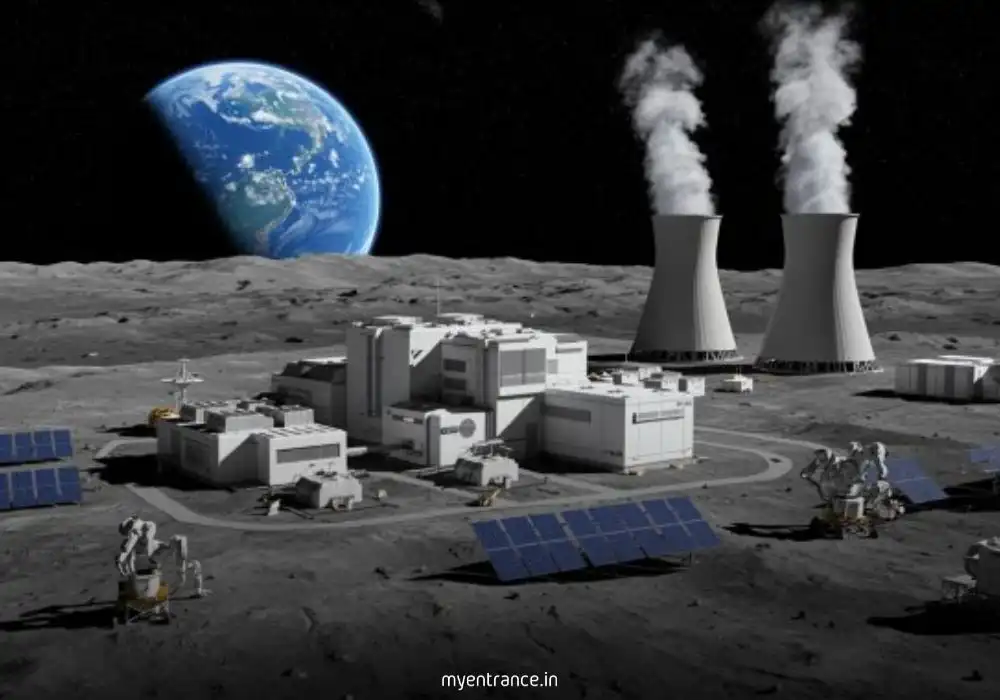Translate Language
Why NASA’s Lunar Nuclear Reactor Could Change Space Exploration Forever
NASA is accelerating plans to build humanity’s first nuclear reactor on the Moon by 2030, shifting focus from fleeting visits to permanent lunar settlements. This mission aims to counter growing competition from China and Russia in the new space race. Crucially, the reactor would power survival systems and research for astronauts while establishing U.S. leadership in space governance.

Why Nuclear Power?
Unlike solar energy that fails during the Moon’s 14-day nights, nuclear reactors provide uninterrupted, high-output power. This enables critical life-support systems, water extraction from ice, and lab operations for long-term habitation. Without it, sustainable lunar bases are impossible.
Why the 2030 Deadline?
Geopolitics drives this urgency. China and Russia’s joint lunar program threatens to control strategic zones and resources. NASA’s acting administrator Sean Duffy is fast-tracking partnerships with aerospace firms because whoever builds first sets precedents for mining rights and territorial access.
Why Replace the ISS?
The aging International Space Station (ISS) will retire by 2030. NASA’s pivot to commercial stations (like those by Blue Origin and Axiom Space) accelerates innovation and cuts costs. Private sector collaboration is essential to maintain U.S. orbital presence while focusing resources on lunar ambitions.
The Bigger Picture:
This isn’t just about technology—it’s about dominating space economics. Lunar reactors could enable fuel production for Mars missions, while commercial stations open trillion-dollar industries. Leadership now determines who controls tomorrow’s space treaties and resources.
Why This Matters for Exams:
For SSC, UPSC, PSC, and KAS aspirants, this topic integrates Science & Tech, International Relations, and Environment:
Current Affairs: Tests often feature NASA/ISRO missions, nuclear tech, and space diplomacy.
Geopolitics: China-Russia space collaboration vs. U.S. strategies is a recurring theme.
Environment: Nuclear vs. renewable energy debates extend to space sustainability.
Innovation: Questions on public-private partnerships (e.g., NASA-Commercial firms) are common.
Questions & Answers:
Q1: What is the primary advantage of nuclear reactors over solar power for lunar missions?
A1: Nuclear reactors provide continuous power during the Moon’s 14-day nights, enabling uninterrupted operations of life-support systems and research labs.
Q2: How does NASA’s lunar reactor plan reflect geopolitical competition?
A2: It counters China-Russia joint lunar projects, aiming to establish U.S. leadership in space governance and resource access before rivals set restrictive precedents.
Q3: Name two companies competing to build commercial space stations for NASA.
A3: Blue Origin and Axiom Space (Vast is another key player).
Q4: Why is replacing the ISS by 2030 strategically important?
A4: To transition to cost-efficient commercial stations, freeing NASA’s budget for lunar/Mars missions while maintaining U.S. presence in orbit.
Q5: What broader goal does NASA’s reactor support beyond lunar bases?
A5: Enabling fuel production for deep-space missions to Mars and establishing frameworks for space resource utilization.
Get 3 Months Free Access for SSC, PSC, NIFT & NID
Boost your exam prep!
Use offer code WELCOME28 to get 3 months free subscription. Start preparing today!















